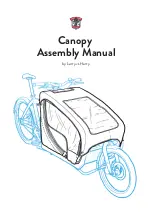
Manual
Operation Manual for
ZeMa Single Cells
Prepared on: 23-11-2022
Prepared by: GBA
Released on: 04.01.2023
Released by: -
Revised on: -
Index: _-
Distributed to: customer (public)
Pages: 21/35
This document is uncontrolled when printed. For the most current and official copy, check the server.
Rail Engineering
Tel. +49 (0) 2331/372 591
Dieckstrasse 42
Fax +49 (0) 2331/372 804
DE-58089 Hagen
www.enersys.com
8.2
Cleaning and visual inspection
List of tools for this service action:
Designation
Comments
Damp cloths
Tool for accessing
According to documents of the corresponding
battery box
The batteries must be kept clean and dry.
Risk of sparking caused by static discharge!
Clean dirty surfaces of batteries and cells with a
water-dampened cloth
.
Other cleaning agents or other substances shall not be used.
Lead-acid batteries should not be cleaned with a dry cloth or feather
dusters.
Use protective glasses and clothes!
Protect the eyes
if you come near the battery,
liquids and explosive gases can cause blindness and damage
While
working on batteries
observe the accident prevention regulations,
as well as EN 62485-2 and -3 and EN 50110-1.
Risk of case damage!
There is a risk of damage to plastic cases by
chemicals
.
Do not use any sprays, chemicals, solvents or similar to clean the battery.
The system design for rail application often uses fully insulated connectors. This helps
avoiding creepage from normal light pollution in the battery container. In the case of
heavy soiling use the battery switch to interrupt the charging of the battery. Then
disconnect the battery pack with the battery connector and clean the surface with a
water-dampened cloth.
Check the cells, the connectors and the tray on defective components: orientation and
position of the components, material cracks, signs of overheating, extraordinary marks on
valve covers, leaking electrolyte (gel), loose connectors, etc.
Should you clean a dismounted battery with a water jet, you have to use a hose to pump
out the water that has collected in the tray. Take care that there is no water in the screw
heads of the connectors and that the battery is thoroughly dry before re-commissioning.















































